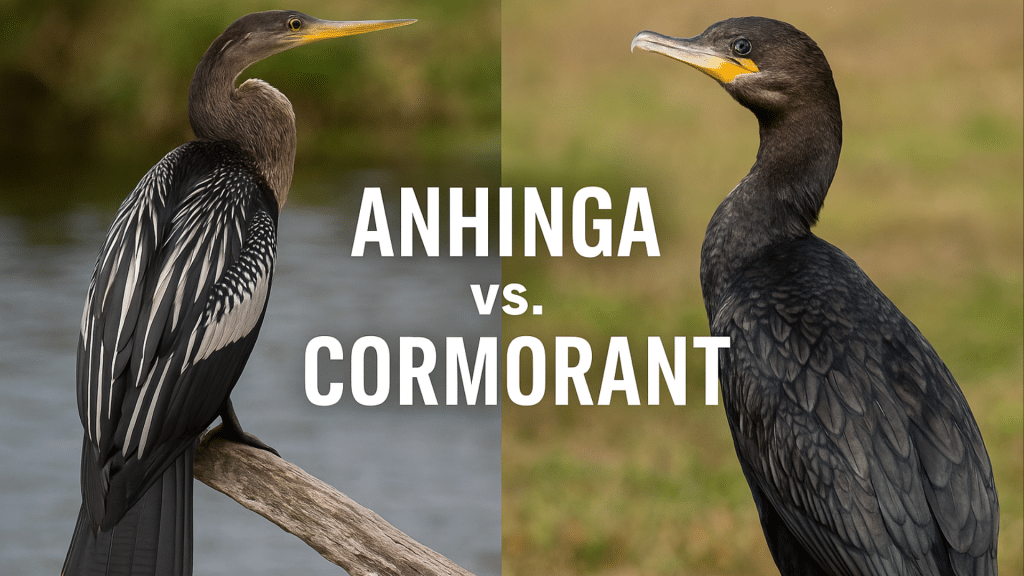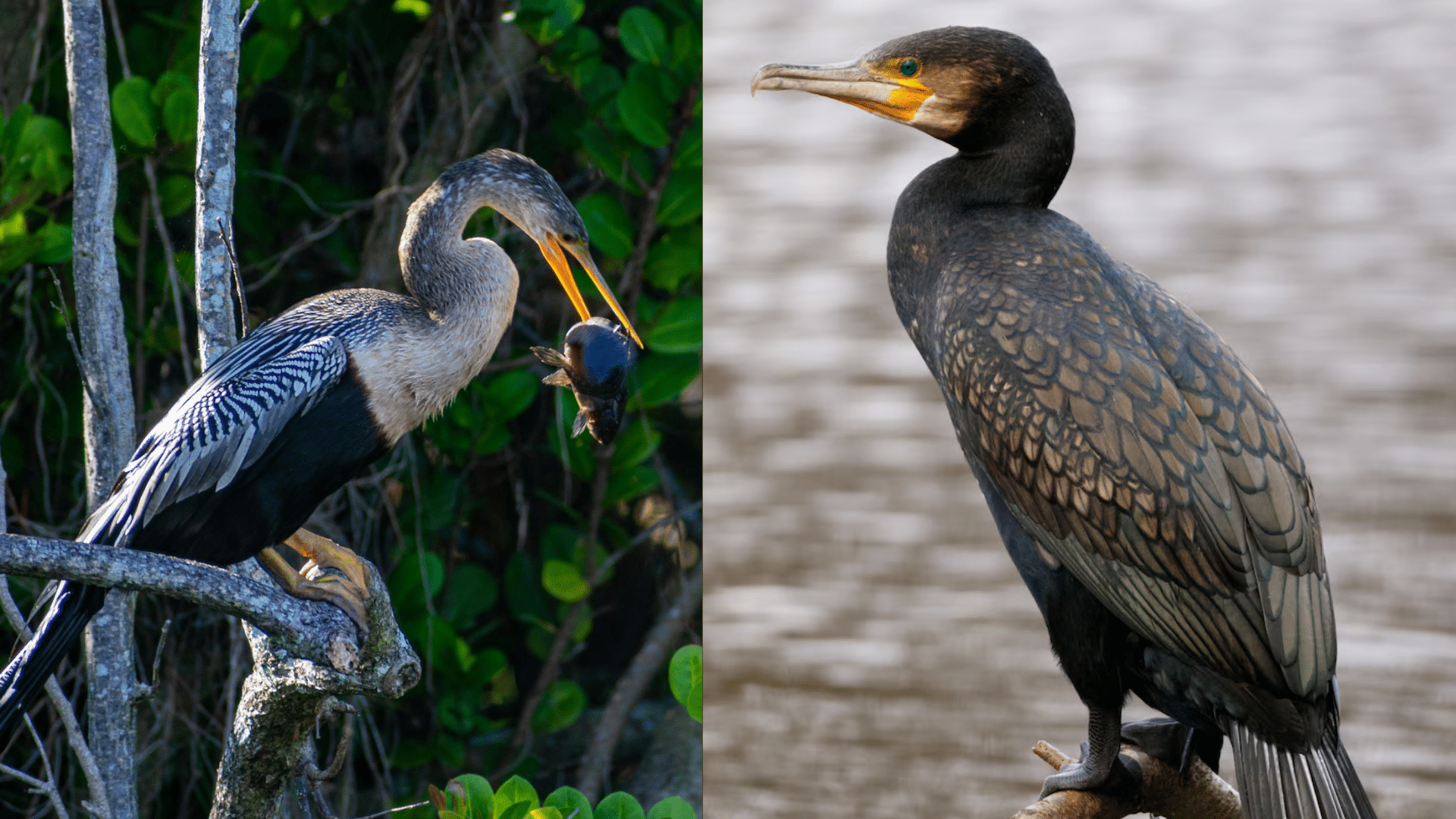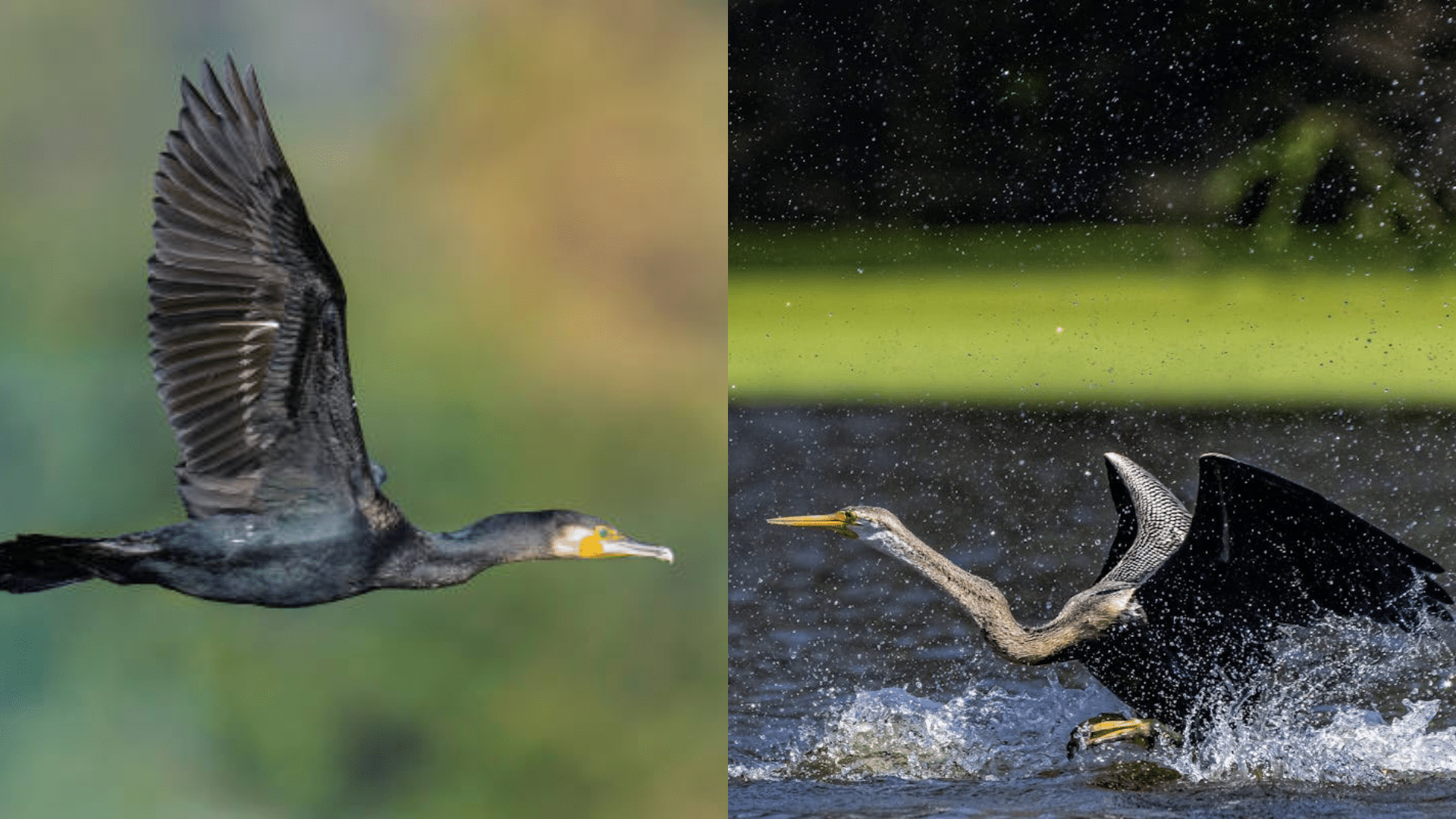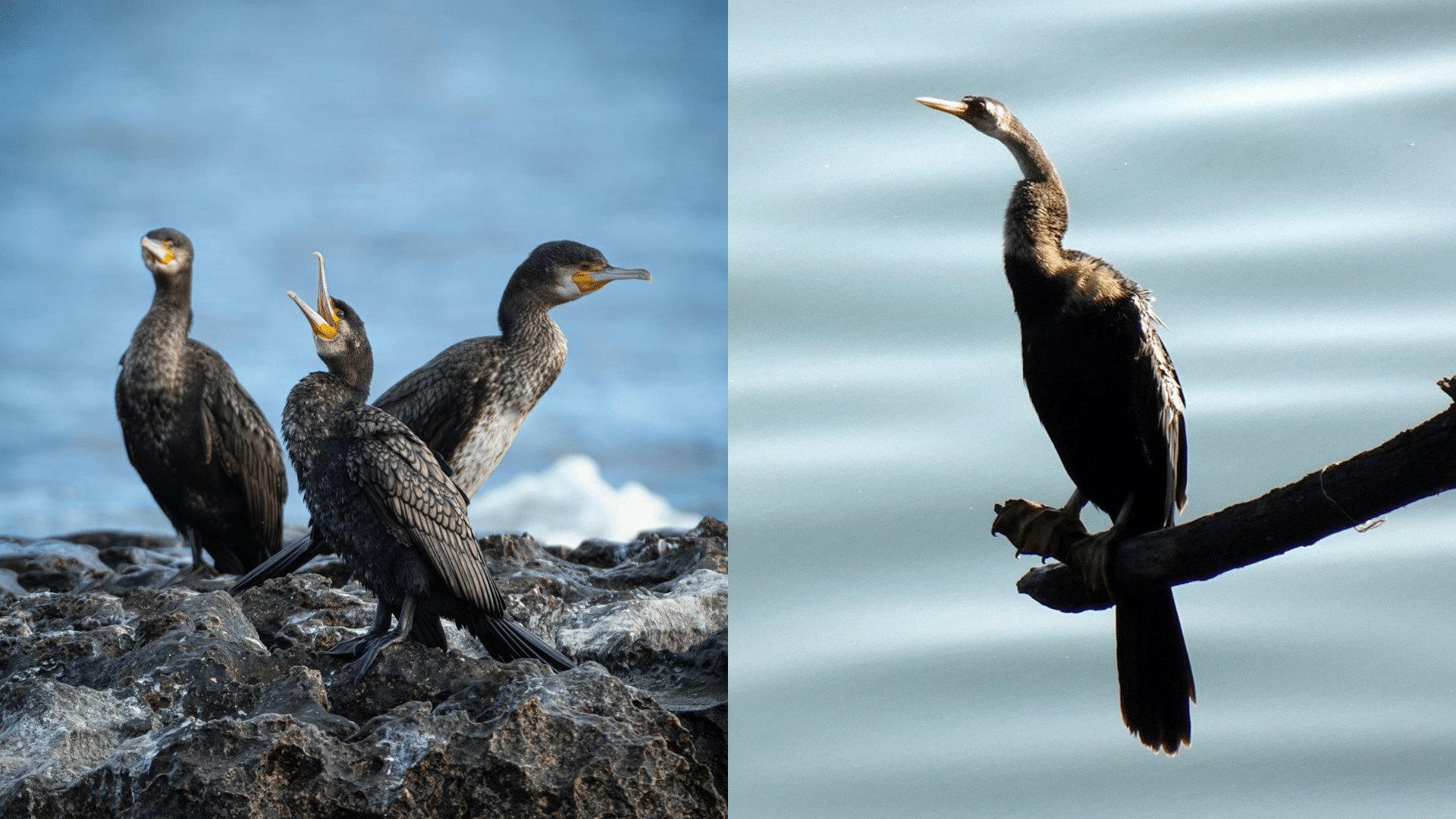Have you ever seen a big water bird drying its wings by the shore and wondered, Is that a cormorant or an anhinga? Their similar looks and habits often confuse observers.
Both the cormorant and anhinga exhibit similar behaviors, such as swimming and drying their wings, which can make it difficult to distinguish one from the other, even for experienced birdwatchers.
In this blog, we’ll break down the key differences and behaviors of each bird, so you’ll be able to appreciate their unique traits.
Identifying the Differences in Physical Features
Spotting the differences between cormorant vs anhinga comes down to looking at their beaks, necks, tails, and plumage. Here’s how to tell them apart.
| Feature | Anhinga | Cormorant |
|---|---|---|
| Beak Shape | Long, straight, and pointed for spearing fish | Curved, hooked bill for grabbing prey |
| Neck and Tail | Long, thin neck and fan-shaped tail for balance while swimming | Shorter neck and stiff tail for quick plunging |
| Eyes and Feathers | Blue-green or reddish eyes, dark feathers with white spots | Crystal blue eyes, shiny, solid black feathers |
Fun Fact: Anhingas are called “Snakebirds” because their long necks often peek out of the water while swimming, resembling snakes.
Habitats and Range Where These Birds Live
The anhinga and cormorant may both love the water, but they prefer different types of environments.
1. Anhingas
Anhingas are typically found in freshwater habitats, such as lakes, swamps, and slow-moving rivers.
These calm waters are ideal for fishing. They prefer peaceful spots where they can swim quietly and hunt without much disturbance.
They also need good perches to dry their wings after swimming. You’ll often find them perched on branches or rocks close to the water, waiting for their feathers to dry.
2. Cormorants
Cormorants are more adaptable and can inhabit both freshwater and coastal environments. They can be found near seas, rivers, and lakes, where they hunt in groups.
These birds are often seen in colonies, making them more social.
Unlike anhingas, cormorants thrive in a variety of habitats, from freshwater to coastal cliffs, and are often found in groups, especially during breeding season.
Fun Fact: Anhingas love quiet freshwater environments, but cormorants are much more flexible, often living in large colonies near both freshwater and coastal habitats.
How They Swim, Hunt, and Dry Their Wings
Swimming and Hunting
- Anhinga: The anhinga swims slowly with just its head and neck above the water. It uses this method to sneak up on fish and catch them with its sharp beak.
- Cormorant: Cormorants are fast, powerful swimmers. They sink deep into the water and use their webbed feet to chase after fish, making them excellent hunters.
Wing Drying
- Anhinga: After swimming, both birds spread their wings to dry in the sun, but the anhinga’s posture is more surprising than the cormorant’s relaxed stance.
- Cormorant: The cormorant also spreads its wings to dry them, but it tends to do so in a more relaxed posture.
Fun Fact: Their feathers get soaked during dives, so you’ll often see them pausing to air-dry before flying off.
Social Behavior Alone or Together
Anhingas: The Solitary Hunter
- Behavior: Solitary, usually seen alone or in small groups.
- Nesting: Prefer isolated and quiet areas to nest.
- Fun Fact: Anhingas are less social and nest in more peaceful, remote locations.
Cormorants: The Social Submerger
- Behavior: Highly social, often seen in large groups or colonies.
- Nesting: Nest together in large colonies, especially during the breeding season.
- Fun Fact: Cormorants nest in colonies that can include hundreds of birds, making them much more social than anhingas.
Conclusion
The cormorant and the anhinga are both impressive water birds, each with unique traits that make them interesting to watch.
Anhingas are graceful hunters, known for their “snake-like” swimming and solitary nature, while cormorants are social and active swimmers.
Next time you spot these birds, take a moment to observe their behaviors and appreciate how they’ve adapted to their environments.























